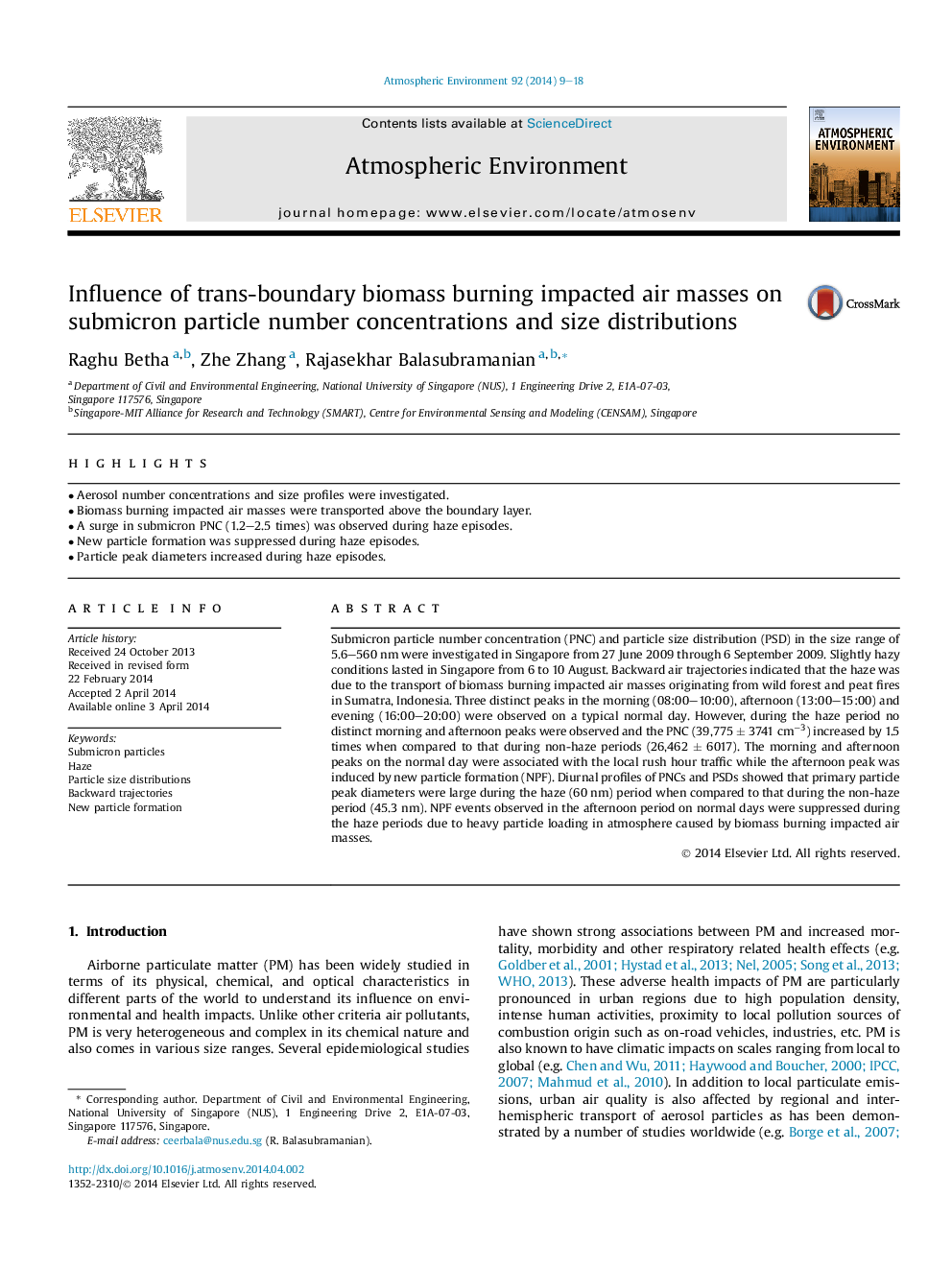| Article ID | Journal | Published Year | Pages | File Type |
|---|---|---|---|---|
| 6339330 | Atmospheric Environment | 2014 | 10 Pages |
Abstract
Submicron particle number concentration (PNC) and particle size distribution (PSD) in the size range of 5.6-560 nm were investigated in Singapore from 27 June 2009 through 6 September 2009. Slightly hazy conditions lasted in Singapore from 6 to 10 August. Backward air trajectories indicated that the haze was due to the transport of biomass burning impacted air masses originating from wild forest and peat fires in Sumatra, Indonesia. Three distinct peaks in the morning (08:00-10:00), afternoon (13:00-15:00) and evening (16:00-20:00) were observed on a typical normal day. However, during the haze period no distinct morning and afternoon peaks were observed and the PNC (39,775 ± 3741 cmâ3) increased by 1.5 times when compared to that during non-haze periods (26,462 ± 6017). The morning and afternoon peaks on the normal day were associated with the local rush hour traffic while the afternoon peak was induced by new particle formation (NPF). Diurnal profiles of PNCs and PSDs showed that primary particle peak diameters were large during the haze (60 nm) period when compared to that during the non-haze period (45.3 nm). NPF events observed in the afternoon period on normal days were suppressed during the haze periods due to heavy particle loading in atmosphere caused by biomass burning impacted air masses.
Keywords
Related Topics
Physical Sciences and Engineering
Earth and Planetary Sciences
Atmospheric Science
Authors
Raghu Betha, Zhe Zhang, Rajasekhar Balasubramanian,
